Dorak Diggers Weigh In On Anna & Royal Treasure
"Dorak Diggers" Weigh In On Anna & Royal Treasure
By Suzan Mazur
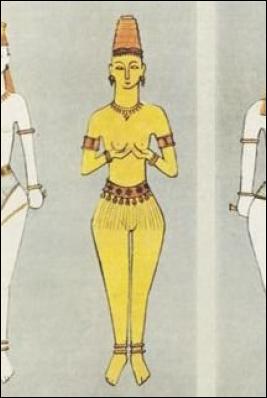
The Yortan Goddess – as
she appeared in the Illustrated London
News.
I've heard from a variety of figures in the antiquities world about the evidence I presented recently on these pages, which essentially cracks the case of one of the great art mysteries -- the whereabouts of the so-called priceless Dorak treasure. (See... Scoop: Mazur: Getting To The Bottom Of The Dorak Affair)
Although many art experts prefer not to say so publicly because they otherwise like and respect James "Jimmie" Mellaart, the British archaeologist at the heart of the matter -- and/or are afraid of reprisals -- they largely agree that Dorak was some kind of ruse. The outstanding question is, of course, why it happened. Which only Jimmie Mellaart knows.
However, because some are still in denial over the evidence presented, I've decided to highlight a few comments in an attempt to further clear the air regarding existence of the artifacts that Mellaart claimed were dug up clandestinely in northwest Turkey from two royal tombs of the Yortan, neighbors of the Trojans.
Mellaart published drawings of the Dorak pieces in the Illustrated London News (November 1959). But by then the treasure and its owner, Anna Papastrati, had supposedly vanished -- never to be seen again. And a scandal ensued.
Moreover, before Mellaart could feel comfortable about running the illustrations, a letter from Anna giving permission was produced. But as it turns out not by Anna. As I noted in "Getting to the Bottom of the Dorak Affair," significant style similarities are evident in a comparison of the Papastrati letter and Mellaart correspondence from the British Institute of Archaeology, Ankara (BIAA) -- where Jimmie Mellaart served as assistant director and his wife Arlette as secretary.
Most noticeable is the use of Roman cap "I" in letter dates instead of Arabic "1", something "just not done" then or now outside Oxford/Cambridge scholarly circles. And sources close to BIAA have revealed that the Anna letter was drafted and typed by the Mellaarts on BIAA's Remington manual typewriter.
The most challenging email I received (aside from a potential threat) about the Scoop story was from Michael Balter ( email at bottom of page with a link to his web page), author of the recent Goddess and the Bull, a biography of Catalhoyuk. Catalhoyuk is considered the "world's oldest urban civilization" and a site Mellaart is credited with co-discovering in 1958 along with archaeologists David French and Allan Hall. Although Mellaart has received most of the credit.
It's astonishing that after seven years of research in Turkey, Balter still holds the view that Mellaart's Dorak treasure existed (and therefore must still exist somewhere).
The Scoop story did not go unnoticed in antiquities circles, despite Balter's surprise at seeing it first in the alternative media. Where else do you go these days to publish the truth but the alternative media? Scoop, edited by the inimitable Alastair Thompson, routinely breaks stories where the archaic media (that would include some of the book world) fear to tread.
Several places which
noticed the Dorak expose:
http://www.michelvanrijn.nl/artnews/artnws.htm
http://www.turkishdigest.com/archive/2005_08_01_archive.html
http://te.verweg.com/pipermail/cpprot/2005-August/001602.html
http://rugnotes.blogspot.com/2005_08_27_rugnotes_archive.html
http://egyptology.blogspot.com/2005_08_01_egyptology_archive.html
http://www.inkemetic.org/INKForum/viewtopic.php?t=1771&highlight=&sid=d7d36a5ed0c6f63c594a7b6b05b11380
Balter writes that he interviewed Mellaart at his home in the UK and was allowed to see his 60,000-word commentary or "monograph" of the Dorak find and was impressed. He adds that aside from some of Mellaart's colleagues at BIAA, he's the only one to have seen it since Dorak Affair authors, Patricia Connor and the late Kenneth Pearson, in the 1960s. Yet Balter does not try to solve the mystery of Dorak in his book, despite including a 19-page chapter up front called "The Dorak Affair". Why not?
Balter defends this decision not to investigate Dorak saying it was not really his focus? Odd, since Dorak is what made Mellaart most visible and Mellaart and Catalhoyuk are forever joined. And he says he's footnoted Mellaart's BIAA letters, yet he doesn't present any -- why not? What might they give up?
When asked, Balter says the theory he favors is that "the Dorak treasure did exist in whole or in part but that Anna did not". But he admits in his book (page 18) that "Mellaart never did find any evidence for these mysterious invaders," the Sea Peoples from northwest Anatolia, who Mellaart "theorized" plundered Egypt and the Levant.
What about the Dorak evidence of a major seafaring population in northwest Anatolia contemporary with Egypt's Pharaoh Sahure?
Balter doesn't say exactly why he believes Anna Papastrati does not exist. However, he concludes that Mellaart is 80 years old this November and "there is no reason to think he will ever change his story" about Dorak -- which is that Dorak is "fact not fiction".
I wrote in "Getting to the Bottom of the Dorak Affair" that since the letter was a fake, Anna didn't and doesn't exist and it is almost a fait accompli there is no Dorak treasure. Pearson and Connor acknowledged in their reporting of Dorak in the 1960s that the Anna letter was the only proof Anna and the treasure existed.
Their book found the two in Turkey on the trail of Anna and the treasure following controversy that erupted in the Turkish press after Mellaart released drawings to ILN. As Connor correctly notes in a recent email to me, "if we [she and Kenneth] had not pulled the story together it would never have emerged in a coherent way and become a cause celebre". Connor studied archaeology at Cambridge in the 1960s where she first became interested in Catalhoyuk.
In the same email, Connor has told me she would be "amazed" if the Dorak mystery she and Kenneth, a WWII fighter pilot turned dramatist, chronicled in Dorak "comes down ultimately, to an I or 1!" And that she "still feel[s] instinctively" Arlette, Mellaart's wife, "was not a party to it all as she was too touchy about M's philandering".
Unfortunately, instinct is not a match for evidence. And however disappointing -- the letters are the crack in the case, aside from off-the-record comment from sources close to BIAA.
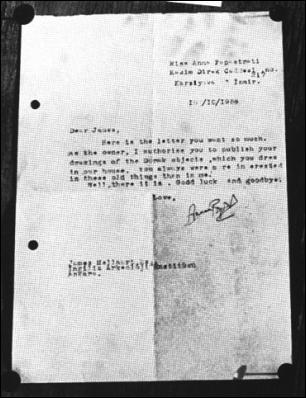
Click for big version
Anna Papastrati Letter—Photo Credit Horizon Magazine
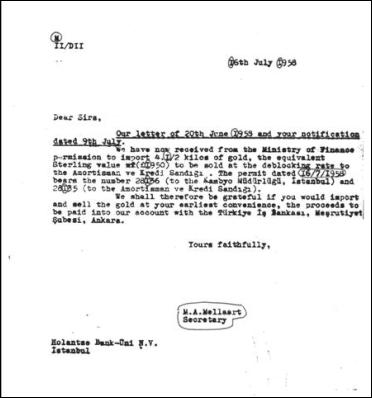
Click for big
version
Mellaart Letter To The Bank--
Credit: British Institute Of
Archaeology--Ankara
But getting back to Michael Balter's email -- I question whether he has really read my Scoop story, since he writes that my article "does not advance the [Dorak] investigation much further" than authors Patricia Connor and Kenneth Pearson did 40 years ago in their book.
Pearson and Connor never approached a style analysis of the Papastrati letter -- saying only the street address could not be found in foot searches. Nor did they present Mellaart BIAA correspondence and compare with the Anna letter. And Connor told me in a 1991 interview over tea in Richmond Surrey that she did not think antiquities dealer Aydin Dikmen could have been Mellaart's inspiration for Anna Papastrati, that he would have been "too young".
Dikmen, however, is not that much younger than Mellaart. Here's an excerpt of my conversation with Patricia Connor about Dikmen:
"He [Aydin Dikmen] lived in a small house. I believe on the outskirts of town [Konya, Turkey]. And I think at that time we wanted to meet as many people to do with archaeology both professionally or in the trade, so to speak. What was very difficult in those days was to distinguish between somebody who was a genuine collector -- a Turkish collector -- and somebody who was running stolen artefacts out of the country. . . .I mean it's like in the modern world of museums. If you have a man who's a famous curator in a field of activity who collects for his museum. But does he collect for himself on the side? If he buys a piece, does he buy it for his museum or for his own apartment? . . .
As far as I can remember, although we'd done the business with the dealers -- although we'd had contact with dealers in the covered bazaar, there were nonetheless collectors as distinct from dealers that we'd been told to go and see. And his name kept cropping up. But I think as a collector rather than as a dealer, as I remember.
What we were trying to isolate was who had duped Mellaart in the case of the Dorak treasure. And I mean one could never assume that Dikmen was anything to do with that; he probably would have been too young at the time."
But Pearson and Connor did present in Dorak portions of a letter sent to them from an Athens-based antiquities dealer, who went unnamed in their book. They cited its "strange logic" and said it "did not accord with Mellaart's report". The letter read:
"The Dorak [Village] area has never yielded any Early Bronze Age antiquities of the so-called Yortan period (named after the village near Pergamum where the first Early Bronze Age relics were found). The alleged treasure was made up of a gold vase, part of a sword of Egyptian incrustations, silver statuettes and other valuables including embroideries. The materials are quite unlikely for that period. All that the Yortan period has yielded in Turkey has been black clay vases and a few marble idols. Otherwise, somewhere, somehow, similar objects would have turned up. These were so unique that they were improbable. . . ."
The logic was not totally off. As I mentioned in "Getting to the Bottom of the Dorak Affair," David French told me that little aside from grave pottery has ever been found that is considered "Yortan" and that there's really nothing to compare Mellaart's treasure with. Again, French was a co-discoverer of Catalhoyuk with Mellaart and Hall and he served for over two decades as BIAA director. French's words carry considerable weight, so here they are again:
"I think archaeologically this [view of Yortan culture] is a little outdated now. I think that Yortan culture as such doesn't exist; it's a particular type of grave pottery which was common in the northwest of Anatolia, and the rest--well, forget."
Also, Michael Balter is incorrect in saying in his book that Seton Lloyd, BIAA's director at the time Mellaart published his article about the treasure, believed Mellaart almost to the end of his life. Lloyd died in April 1996. His niece Dominique Collon told me in 1991: "My uncle is 89 years old. Discussing Dorak would upset him."
Lloyd knew at least as early as 1990 (and probably well before) that Dorak was a fabrication when Collon published her story in Hali in which she challenged Mellaart's book, The Goddess From Anatolia, featuring kilim designs that paralleled Mellaart's own "sketched reconstructions" of Catalhoyuk frescoes. Collon had cleaned the original wall paintings at Catalhoyuk.
The pattern continues. There were also the Beldibi pebbles, which authors Ozgen Acar, Marla Mallett ( The Goddess from Anatolia: An Updated View of the Catal Huyuk Controversy. by Marla Mallett ) and Metropolitan Museum Ancient Near East expert Oscar White Muscarella have all noted were fabrications. This was based on an October 18, 1988 report by four Turkish archaeologists from the Antalya Museum confirming Mellaart invented them:
"All the objects which were described and classified as ancient artifacts by J. Mellaart, are typical pebbles and findable along the Mediterranean coastline. He collected these pebbles at the Beldibi beach and engraved some simple patterns (including a crescent and star like the Turkish flag) and then claimed some of the stones had [paleolithic] figures while others were just natural stones. They have no relation with ancient artifacts."
Balter (not an archaeologist), having seen Mellaart's monograph with physical description and provenance of all the Dorak objects, again, said he was impressed. In his email he wrote: "hard to imagine that Mellaart simply made this all up".
But Pearson and Connor note in their book that one chapter of typescript which they saw was actually written by one of Mellaart's BIAA colleagues (unnamed), who had "helped the archaeologist to sort the material" before showing it to Seton Lloyd. And Balter having spoken at length with Mellaart, would no doubt agree with everyone else's assessment -- that Jimmie Mellaart is an "absolutely brilliant" man.
Morever, if the monograph is so impressive, why did BIAA never publish it? And why hasn't Mellaart presented it widely himself for professional scrutiny?
For example, Mellaart never showed his monograph to Dr. Oscar White Muscarella, when he and Mellaart "of course discussed Dorak" July 11, 1982 at Mellaart's home in the UK. Muscarella had excavated at Gordion, near Ankara,Turkey in the late 1950s and first met Mellaart in Athens in 1959.
Muscarella has written (Bronze and Iron, 1988) that Mellaart thinks the Dorak artifacts have not surfaced because the government of Turkey will claim them. For sure. But Muscarella also notes in his recent book The Lie Became Great (2000, Styx) that in attempting a "disinterested internal archaeological review" of the Dorak discovery, he found "the integrity of the find did not hold up to his scrutiny of this evidence". Muscarella also mentions F. Schachermeyr providing similar doubt about Mellaart's ILN article on Dorak, calling it "skewed" in his 1959/60 report "Die Konigsgraber von Dorak" citing forgeries among the alleged finds.
Muscarella concludes (The Lie Became Great):
"Succinctly, all is clear: not one artifact published as from Dorak has any corroboration, as a discovery from one or more sites, as a group of plundered artifacts, or as individual objects. Hence, there is no alternative but to consider the hoard as published to be a forgery of artifacts and provenience."
By attacking my story, Balter appears to be protecting Mellaart. Why? -- when it is understood inside the archaeology establishment that Dorak was a ruse. Mellaart's former colleagues have said so. And probably privately to Balter. So why continue the charade? It is unlikely at this point that Catalhoyuk will be shut down since like the ancient cities of Aphrodisias, Ephesus and Sardis, it is now an important part of Turkey's tourist industry.
Anna does not exist, as I've demonstrated by presenting the letters showing stylistic similarities. And here are a few more Mellaart letters. Arlette Mellaart's BIAA letter from June 1958 -- written the summer the Dorak affair was supposed to have happened -- again resembling the layout of the Papastrati letter including the use of Roman cap "I" in the date instead of Arabic "1". James Mellaart's letters are less formal and he generally uses Arabic "1" although Roman cap "I" does crop up.
EMAIL FROM MICHAEL BALTER:Dear Susan,
I read your article with great interest, although I am not sure where it was originally published as I saw it on the Web (Scoop Independent News.)
It was kind of you to mention my book, although I could not help noticing that it was usually in the context of pointing out that I had "failed" to uncover various aspects of the Dorak Affair. In fact, it was never my intention to "solve" the case, but rather to show how it affected the history of the excavations at Catalhoyuk. In other words, I was not writing The Dorak Affair all over again, and I can't help but note that your article, despite a lot of interesting material, does not advance the investigation much further than Pearson and Connor's 1967 book! The one thing I did have that Pearson and Connor did not was all the BIAA documents related to Dorak, which are heavily referenced in my chapter notes; these bear most on the relationship between Dorak and the shutting down of Catalhoyuk, which was indirect and not direct as you know.
I did, however, offer an obvious third possibility, which is that the Dorak treasure did exist in whole or in part but that Anna did not. When I saw the unpublished monograph in the Mellaart home, Mellaart told me that I was the first person to do so since Pearson and Connor nearly 40 years earlier. The monograph includes incredibly detailed descriptions of dozens of objects, and it is hard to imagine that Mellaart simply made this all up. Although I did not draw hard conclusions in the book itself, when interviewed I always say that this is the theory I favor.
Mellaart will be 80 years old this November, and there is no reason to think he will ever change his story. Unless the treasure shows up one day, the mystery is likely to remain unsolved.
all best, Michael
www.michaelbalter.com
Note: Many thanks to Patricia Connor for the
wonderful photo of "Jimmie Mellaart fixing a Cinzano"
included in the Scoop story "Getting to the Bottom of the
Dorak Affair" and attributed to the now-defunct Horizon
magazine -- which published it without photo credit. Also,
in rechecking my notes, I spoke with James Mellaart by phone
at his home in London, not St. John's Wood.
Suzan Mazur's stories on art and archaeology have been published in The Economist, Financial Times, Connoisseur, Archaeology and Newsday. Some of her other reports have appeared on PBS, CBC and MBC. She has been a guest on McLaughlin, Charlie Rose and various Fox television news programs. Email: sznmzr@aol.com


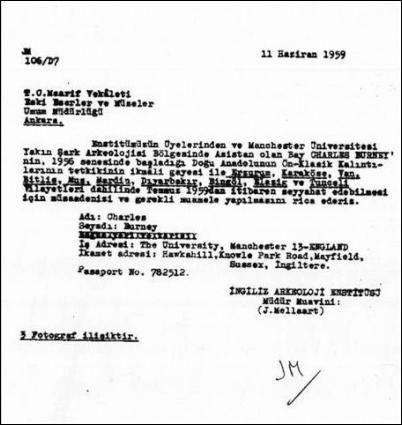
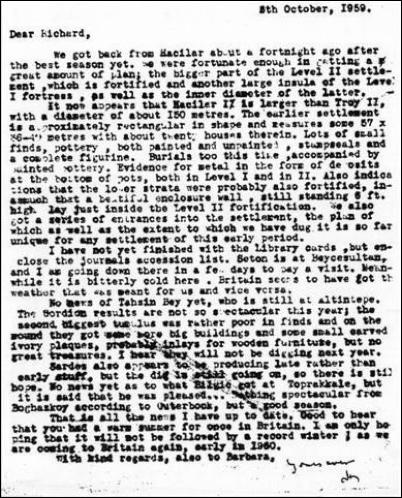
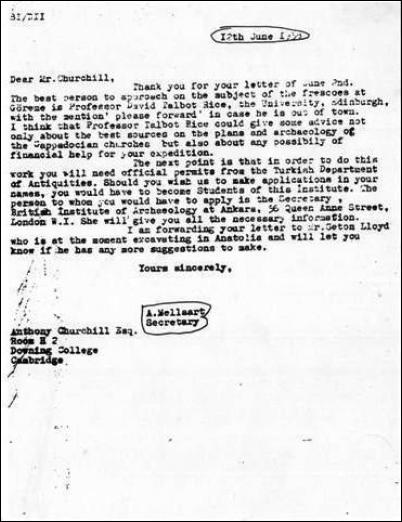
 Richard S. Ehrlich: Deadly Border Feud Between Thailand & Cambodia
Richard S. Ehrlich: Deadly Border Feud Between Thailand & Cambodia Gordon Campbell: On Free Speech And Anti-Semitism
Gordon Campbell: On Free Speech And Anti-Semitism Ian Powell: The Disgrace Of The Hospice Care Funding Scandal
Ian Powell: The Disgrace Of The Hospice Care Funding Scandal Binoy Kampmark: Catching Israel Out - Gaza And The Madleen “Selfie” Protest
Binoy Kampmark: Catching Israel Out - Gaza And The Madleen “Selfie” Protest Ramzy Baroud: Gaza's 'Humanitarian' Façade - A Deceptive Ploy Unravels
Ramzy Baroud: Gaza's 'Humanitarian' Façade - A Deceptive Ploy Unravels Keith Rankin: Remembering New Zealand's Missing Tragedy
Keith Rankin: Remembering New Zealand's Missing Tragedy